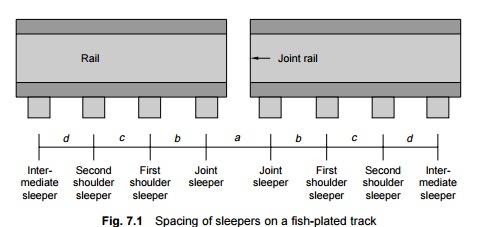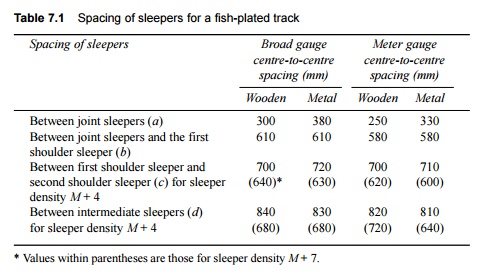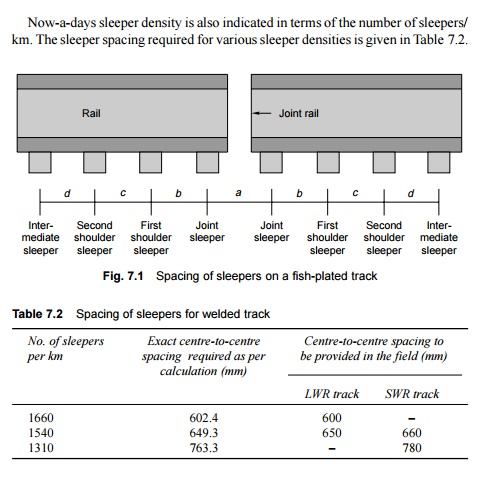Chapter: Civil : Railway Airport Harbour Engineering : Railway Engineering : Sleepers
Sleeper Density and Spacing of Sleepers

Sleeper Density
and Spacing of Sleepers
Sleeper density is the number of sleepers per rail length. It is specified as M + x or N + x, where M or N is the length of the rail in metres and x is a number that varies according to factors such as
(a) axle load and speed,
(b) type and section
of rails,
(c) type and strength of the sleepers,
(d) type of ballast and ballast cushion, and
(e)
nature of formation.
If the sleeper density is M + 7 on a broad
gauge route and the length of the rail is 13 m, it means that 13 + 7 = 20
sleepers will be used per rail on that route. The number of sleepers in a track
can also be specified by indicating the number of sleepers per kilometre of the
track. For example, 1540 sleepers/km. This specification becomes more relevant
particularly in cases where rails are welded and the length of the rail does
not have much bearing on the number of sleepers required. This system of
specifying the number of sleepers per kilometre exists in many foreign
countries and is now being adopted by Indian Railways as well.
The spacing of sleepers is fixed depending upon
the sleeper density. Spacing is not kept uniform throughout the rail length. It
is closer near the joints because of the weakness of the joints and impact of
moving loads on them. There is, however, a limitation to the close spacing of
the sleepers, as enough space is required for working the beaters that are used
to pack the joint sleepers. The standard spacing specifications adopted for a
fish-plated track on Indian Railways are given in Table 7.1. The notations used
in this table are explained in Fig. 7.1.
Table 7.1 Spacing of sleepers for
a fish-plated track


Related Topics